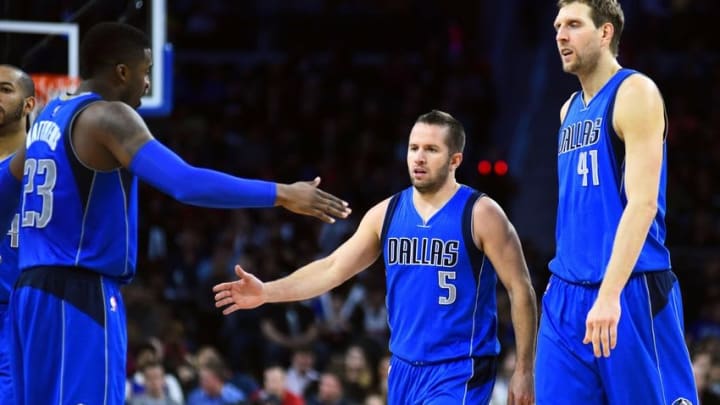Going small was popular for the Dallas Mavericks in 2015-16, and with new weapons this year, their small-ball lineups could be much better.
The Dallas Mavericks tried a lot of different things last season as they battled for a playoff spot and coped with late-season injuries. At times, they rolled with smaller lineups that helped create a more efficient offense and a more versatile defense.
But they weren’t the first team to try out this strategy. The small-ball strategy has been a rising tactic in the NBA over the course of a few years now, with the Golden State Warriors serving as the model example of what happens when things go right.
Teams try it when they are in a funk or when they need a boost of energy, as going small usually allows more athleticism onto the floor at one time.
For the Mavs, it was used to try to spark a run in 2015-16. Lineups featuring Dirk Nowitzki as the center were popular late in the season as the team would look to bring out any combination of Deron Williams, Devin Harris, J.J. Barea, Wesley Matthews, Justin Anderson and Chandler Parsons (now with the Memphis Grizzlies) to fill in the rest of the lineup.

The Smoking Cuban
Now, with the 2016-17 season rapidly approaching, we can take a look at what kind of lineup combinations can be formed using the team’s newest additions.
It’s important to realize that the Mavs signed a few players this summer that can play multiple positions.
Their top signing came in the form of Harrison Barnes. Now Barnes is primarily a small forward, but at 6’8″, he has the capability of playing a little bit of power forward depending on who he might be matched up with.
Seth Curry doesn’t really have a specific position. I guess you could classify him as a shooting guard, but in his final 11-game stretch of the season with the Sacramento Kings in 2015-16, he played the point guard position, just like his brother. The bottom line is that he can play either point guard or shooting guard at any time.
Quincy Acy is another player like Seth Curry, except he plays both forward positions and can play solid defense in the paint or around the arc.
So how does this benefit the Mavs? Well, they have added to the versatility of their lineup and now have more combinations to use when going small. Whether they leave a center like Andrew Bogut or Salah Mejri in the game or place Dirk Nowitzki in the position, just about every other player on the team can play multiple positions.
In terms of lineups, the team could go with a defensive team and place Curry, Matthews, Anderson, Barnes and Bogut in the game.
On the other side of things, they could go all offense and roll with Williams, Harris, Matthews, Barnes and Nowitzki. Then, you could create balance and insert Barea, Curry, Anderson, Acy and Nowitzki. There’s an unlimited amount of options and I’m sure Rick Carlisle will use plenty of them in the upcoming season.
However, with every great plan there’s always a setback. Small lineups usually can’t be used for very long and you have to be careful with matchups too as Nowitzki can’t be playing center while Andre Drummond or DeAndre Jordan is in the game.
The Mavs made a habit out of going small at the right times in 2015-16 and it turned into a major reason as to why they were able to make the playoffs and steal a game from the Oklahoma City Thunder.
Next: 2016 NBA Offseason Grades For All 30 Teams
With more weapons and more athleticism on their roster, there’s no reason to believe the Mavs won’t follow a popular trend in the NBA and continue to go small.
